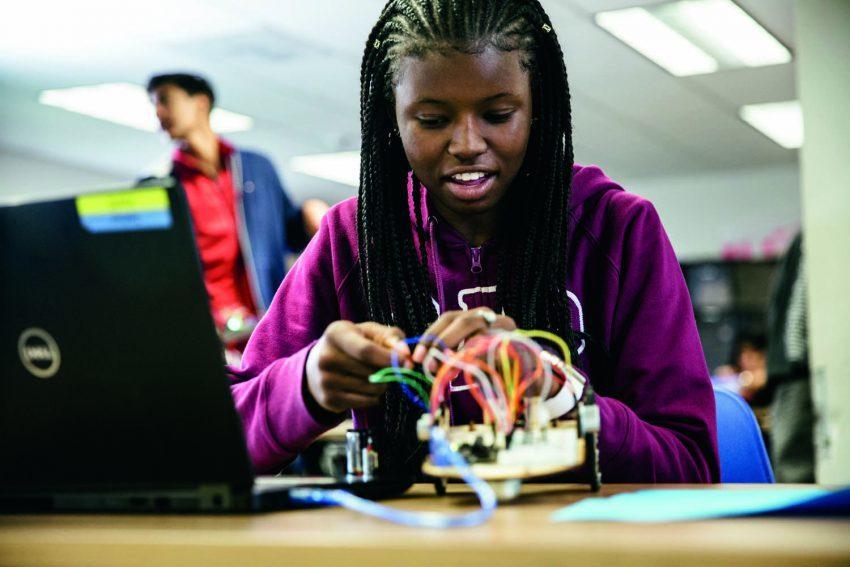How To Create Interdisciplinary Projects
School disciplines are connected, and interdisciplinary teaching helps students connect the dots. Here's how to create meaningful projects from your students.

It’s not hard to see that the subjects students of all ages study are often interconnected. Literature is tied to the arts, and history to the sciences, and the sciences to math and engineering, and so on, and so on. As witnessed in STEM/STEAM education, these fields of study are complementary and have the potential to inspire one and the other.
That’s why an interdisciplinary approach to learning makes so much sense, as it gives young learners the opportunity to make connections between ideas and concepts within and across the different disciplinary boundaries. The knowledge that’s gained in one classroom can be carried over to a topic in the next. Further, by exposing students to different perspectives, the potential for collaboration and new ways of thinking are given the opportunity to take root and grow.
Yet, incorporating interdisciplinary learning into the classroom doesn’t just happen by itself—it takes planning and coordinating. To help chart a path to designing interdisciplinary projects, we spoke to three XQ educators to get their insights on how to create interdisciplinary projects.
HERE’S HOW TO START
Advice from John Bosselman, Director of Instruction, Co-Founder, Latitude 37.8 High School
IDENTIFY KEY, MEANINGFUL CONTENT KNOWLEDGE OR SKILLS that provide for rich in-depth conversation across subject areas.
ASK (and keep it simple) a meaningful transdisciplinary question that requires multiple subject areas to answer.
PLAN the key tier two or three vocabularies that you will want students to use to demonstrate their technical prowess.
ALIGN curriculum and project to key literacy tests that students will read and discuss to enrich their learning. This can be done by using grounding text, professional text, relational text, case studies, and experience as text.
DESIGN meaningful background knowledge workshops that help students access the texts and engage in meaningful dialogue
SCAFFOLD for student engagement in the academic rigor of the topics.
CREATE AND ONBOARD students for a meaningful end of project assessment that connects to the exhibition that students have of their beautiful work.
REFLECTION on the process is an important step for both teachers and students to unpack how and what they learned.
HERE’S ANOTHER STRATEGIC APPROACH
Advice from Meika Nwoamah, Science Instructor, and Lauren Murray, English Instructor, DaVinci RISE High School
ASK Project-based learning requires inquiry and personal investment.
SHARE your findings, don’t just live in your classroom! Share with your team about projects happening within your classroom.
START SMALL with skills amongst your instructional peers and collaborate on scaffolding for instruction. Align instruction across multiple classrooms.
PLAN opportunities for students to cross their content knowledge with your assessments by creating a clear deliverable for all content areas.
ALIGN rubrics and feedback with similar language, scoring, and skills and revision opportunities. Assessment should be transparent across content areas.
LEARN MORE ABOUT INTERDISCIPLINARY LEARNING WITH THESE OTHER RECENT POSTS FROM THE XQ BLOG:
IN A CONTEMPORARY, MEDIA-DRIVEN WORLD, THESE TWO SCHOOLS ARE RETHINKING EDUCATION
HIGH SCHOOL AND THE FUTURE OF WORK
AND LEARN MORE ABOUT PROJECT-BASED LEARNING HERE:
HOW TO HELP STUDENTS START THEIR OWN PODCASTS
WHAT HAPPENS WHEN STUDENTS DECIDE HOW THEY LEARN?
Join our team of XQ guest bloggers! Share your tips, advice, insights, and experiences on rethinking high school. Check out this form for details.










